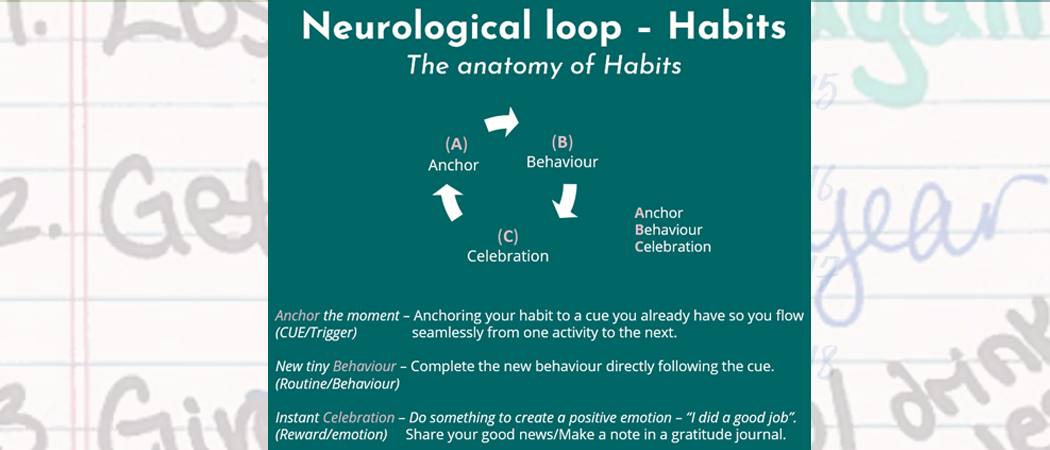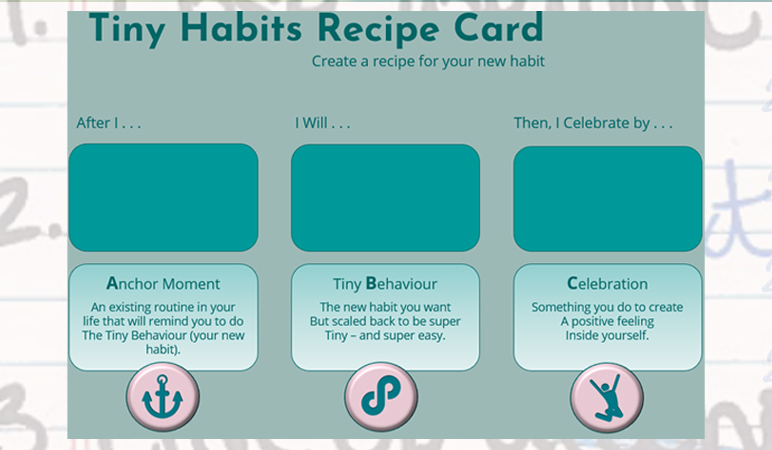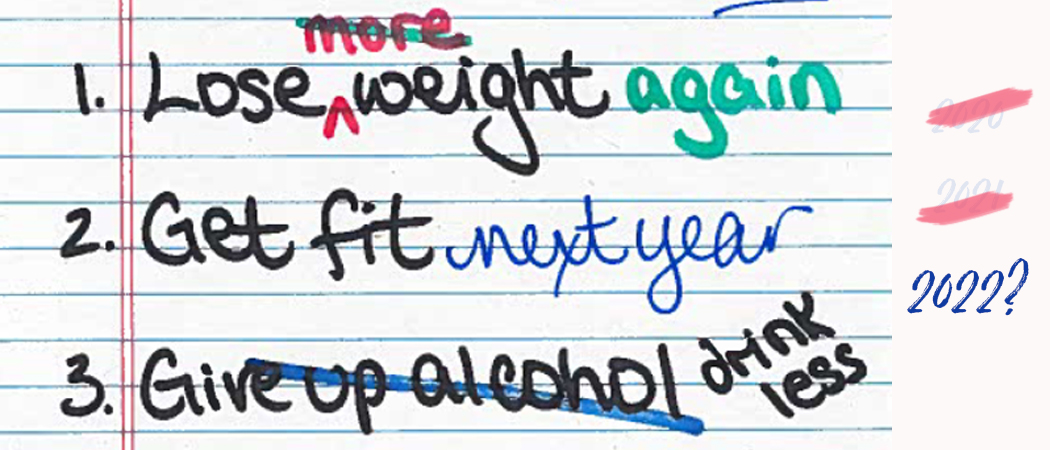I Really Want to Make a New Habit Stick
Firstly, cut yourself some slack – we’ve got you on this.
You made a commitment to change something important in your life. Maybe it was to get fitter, sleep better, spend more time with family, or finally start journaling. You might have even shared this resolution with friends or loved ones, with the goal of celebrating your success in a few months.
That sense of accomplishment? It’s still absolutely within reach. But if you’re here, chances are your motivation has already started to fade – and you’re wondering how to actually get momentum.
Good news: The problem isn’t you. It’s the approach.
Let’s explore a practical, neuroscience-backed strategy to help you make your new habit stick – without relying on willpower alone.
🚀 Let’s Get Stuck Into Habit Stacking
What is ‘Habit Stacking’?
Habit stacking is a simple yet powerful technique that helps you build new habits by attaching them to existing ones. It’s part of a broader behavioural science approach made popular by BJ Fogg, author of Tiny Habits: The Small Changes That Change Everything, and founder of Stanford’s Behavior Design Lab.
As Fogg says:
“No behaviour happens without a prompt.”
In other words, the key to starting and sticking with a new habit is to link it to something you’re already doing regularly – your anchor habit.

🎯 How It Works
Fogg’s model for habit formation includes three steps:
Anchor → New behaviour → Celebration
Let’s break that down:
Anchor (Cue): A habit you already do, like brushing your teeth or making coffee.
New Behaviour: The tiny habit you want to start.
Celebration: A small positive action that reinforces the habit (like a fist pump or saying “nailed it!”).
For example:
After I make my morning coffee, I will do two push-ups. Then I’ll say, “I’m getting stronger!”
By embedding your habit into an existing routine, you reduce the need for motivation and memory – which are both limited resources.
⚠️ Beware the Gung-Ho Trap
Most failed resolutions start with too much ambition and too little structure.
You know the drill:
“I’ll do 20 push-ups a day, 3 days a week!”
The first week feels great. By week three? You’re sore, swamped with work, and skipping workouts. Soon, the habit disappears altogether.
Why? Because it wasn’t tiny enough to stick.
✅ Try the ‘Tiny Habit’ Approach Instead
Start small. Ridiculously small.
Instead of 20 push-ups, start with 2.
When that becomes second nature, you can build up. This works because it removes the pressure to perform and lets your brain associate the habit with ease and reward, not struggle and failure.
And yes – you can increase the intensity over time. But starting tiny gets you started at all.
🧩 The Tiny Habit Recipe
Use this template to start building new behaviours into your day:
“After I [current habit], I will [new tiny habit]. Then I’ll [celebrate].”
Here are a few ideas:
After I sit up in bed, I will stretch for 10 seconds.
After I put the toothbrush in my mouth, I will do 2 squats.
After I hang up the phone, I will walk around the room.
After I sit down to eat, I will ask my child what the best part of their day was.
Pro tip: The celebration is key – it rewires your brain to associate the new behaviour with a positive emotion.
O.K… it’s your turn to try it! Use the recipe card below to help you.

🧠 The Psychology Behind It
Why does this work?
Because it bypasses the need for motivation and taps into your brain’s reward system. By keeping the habit small, consistent, and positive, you train your brain to crave the behaviour.
Research from Stanford and other behaviour change studies shows that:
Context beats motivation. Anchoring your habit makes it easier to remember and act on.
Emotion drives repetition. Celebrating immediately after makes the habit emotionally rewarding.
Small wins add up. Tiny changes compound over time into meaningful transformation.
😬 What If I Still Fail?
Then you’re human.
Don’t abandon your goals – adjust your strategy. Ask yourself:
Was the anchor too weak?
Was the new behaviour still too ambitious?
Did I forget to celebrate?
Remember, failure is feedback. A growth mindset lets you tweak the system until it works for you.
Here’s some simple examples to help you out
+ After I… sit up in bed… I will… stretch for 10 seconds
+ After I… put the toothbrush in my mouth… I will… complete 2 squats
+ After I… hang up the phone… I will… get up and walk around the room for two minutes
+ After I… sit down to eat… I will… ask my children to tell me about the best part of their day
📣 Want Support to Build Your Mental Fitness?
At Get Mentally Fit, we help individuals and organisations build sustainable behaviours that improve psychosocial wellbeing, performance, resilience, and success.
💬 Whether you’re forming habits for personal growth or aiming to build mental fitness in your team, we can help.
🔗 Get in Touch Today or explore our Training Workshops for supporting the capabilities of your people.
📬 Join our mentally fit community below or follow us on socials for weekly wellbeing tips and habit-building insights.
You don’t need to rely on willpower. You just need the right system.
Let’s build habits that last – together. 💪


